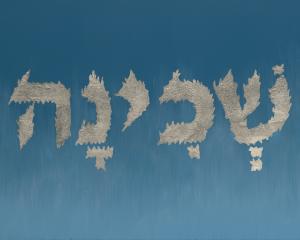Sale on canvas prints! Use code ABCXYZ at checkout for a special discount!

The Feminine Name of God : Shekhinah
“....here is the deepest secret nobody knows...and this is the wonder that’s keeping the stars apart
I carry your heart (I carry it in my heart)”
e e cummings 1952
“We may well prefer the dark secret of our own existence to the whole range of this purely economic glory of God, i.e. to the unknown quantity, the inscrutable being who is concealed by it. But in the end it would be deadly for faith if God were not the God of Glory...In His manifestations God presents Himself as one who dwells, one who descends, one who comes and goes and finally, as a fellow-traveler...YHWH descends in the form of fire...the pillar of cloud...at the consecration of the tabernacle, the glory descends definitively to abide (shakan, whence shekina) within the camp (Exodus 33,35,40).”
from “The Glory of the Lord: Volume 6” by
Holy Theologian Cardinal Hans Urs von Balthasar (1905-1988)
Here we go. This blog may seem like a list of a whole lot of books, but I don’t know how to introduce you to Shekhinah in any other way, except to invite you on a prayerful, loving pilgrimage. Also, there is another clearly written explanation of this Hebrew calligraphy by Professor John Dadosky, in the book, “Image to Insight.”
In the early 90’s while I was just beginning my six year apprenticeship of iconography with the Russian American Master Iconographer, Friar Robert Lentz, OFM, I slowly read through all the volumes of “The Glory of the Lord.” I had been introduced to von Balthasar at age 19 by our Novice Master, Fr Vincent O’Flaherty, who had us read the book “Prayer” by the great theologian, and later reintroduced to him, and the mystic Adrienne von Speyr, by my deceased friend, Fr Eddie Oakes, who happened to be writing his truly amazing and holy book on von Balthasar, in the late 80’s, called “Pattern of Redemption” while I was living with him at the 98th Street Jesuit Community in New York City.
But it was later, in Albuquerque , in Volume 6 that I first came across the word, shekina. This led to a journey I’m still on, or a ‘condition’ of sitting inside this mystery, and feeling, or sensing something almost indescribable. Then, when I met Rabbi Leah Novick, after reading her scholarly, beautiful book, “On the Wings of Shekhinah : Rediscovering Judaism’s Divine Feminine” I think I gradually gained more and more understanding. But like the feminine concept of Hagia Sophia or Holy Wisdom, throughout the five Wisdom Books In Scripture (see Kathleen O’Connor’s book, “The Wisdom Literature” and the brilliant “Sophia : the Hidden Christ of Thomas Merton” by Christopher Pramuk) I understood there are somethings that simply cannot be apprehended by the mind, but must be sought in the heart of loving prayer, and often ask, like Icons, for a kind of distance or respectful patience, and as with the Most Blessed Trinity, always remain a holy mystery. As much as I try to describe this pilgrimage to seek and find Shekhinah, it’s like trying to see or explain the Holy Spirit. Yet, I do feel the presence of Shekhinah descend in a palpable way, in late November and during Advent, and reach “Her zenith” on Christmas Eve. As Marcellus says in Shakespeare’s “Hamlet,” that “Some say that ever ‘gainst that season comes, wherein our Saviour’s birth is celebrated, this bird of dawning singeth all night long; and then, they say, no spirit dare stir abroad, the nights are so wholesome,then no planets strike, no fairy takes, nor witch hath power to charm, so hallow’d and so gracious is the time.” I think we used to refer to this sensation as the “Christmas Spirit,” but as I got a better sense of Shekhinah I believe it is this mystery of the Feminine presence of God. I also believe you can feel this presence too if you become aware of the existence of this beautiful mystery, of one more way, as von Balthasar says, of the manifestations of God, “who descends definitively to abide,” as God with us.
“O Come, O Come, Thou Dayspring, come and cheer, our spirits by Thine Advent here. Disperse the gloomy clouds of night, and death’s dark shadow put to flight. Rejoice, Rejoice! O Israel, to thee shall come Emmanuel.”
Fr Bill McNichols for the first week of Advent 2019